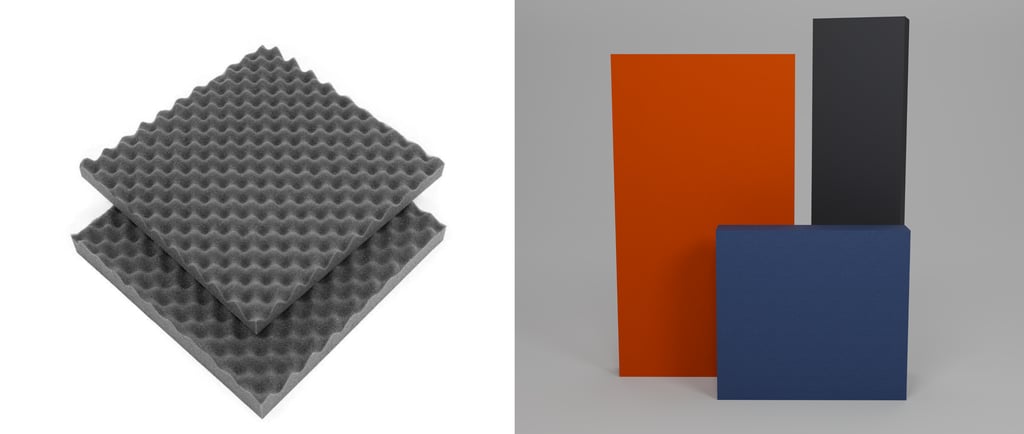Acoustic Panel or Acoustic foam which one is the best?
Pros and cons off Acoustic foam and Acoustic panel
Sonicfix Acoustic Panels
3/9/20242 min read


Acoustic foam and acoustic panels are both popular options for treating room acoustics and reducing echo, but they have some key differences in terms of materials, effectiveness, and application. Here's a comparison along with their pros and cons:
Acoustic Panels:
Acoustic panels are typically made from dense materials such as fiberglass or mineral wool, covered with fabric or other acoustically transparent materials. They are designed to absorb a broad range of frequencies, including both high and low frequencies.
Pros:
Broad Frequency Absorption: Acoustic panels are effective at absorbing a wide range of frequencies, including both high and low frequencies, making them suitable for comprehensive room acoustics treatment.
Durable: Acoustic panels are often more durable and long-lasting compared to acoustic foam, especially when made with high-quality materials.
Professional Appearance: Acoustic panels are available in a variety of colors, shapes, and finishes, allowing for customization to match the aesthetics of the room or studio.
High Absorption Coefficient: Acoustic panels typically have a higher absorption coefficient compared to acoustic foam, meaning they can absorb more sound energy per unit area.
Cons:
Cost: Acoustic panels are generally more expensive than acoustic foam, especially higher-end options with premium materials and finishes.
Installation Complexity: Mounting acoustic panels may require more effort compared to acoustic foam, especially for larger or heavier panels.
Weight: Acoustic panels made with dense materials can be heavier than acoustic foam, requiring sturdy mounting hardware and careful installation.
Less Versatile Shapes: While some acoustic panels offer customization options, they may be less versatile in terms of shapes and sizes compared to acoustic foam.
Acoustic Foam:
Acoustic foam is typically made from polyurethane foam and is designed to absorb sound waves, reducing echo and reverberation in a room. It's often available in various shapes and sizes, including wedges, pyramids, and egg crates.
Pros:
Affordable: Acoustic foam is generally less expensive compared to other acoustic treatments, making it a cost-effective option for those on a budget.
Easy to Install: Acoustic foam panels are lightweight and easy to install using adhesive or mounting hardware, making them suitable for DIY installation.
Versatile: Acoustic foam comes in various shapes and sizes, allowing for flexibility in design and placement to target specific areas of echo.
Effective for High Frequencies: Acoustic foam is particularly effective at absorbing high-frequency sound waves, such as those produced by voices and instruments.
Cons:
Limited Low-Frequency Absorption: Acoustic foam is less effective at absorbing low-frequency sound waves, so it may not fully address bass-related echo issues.
Durability: Over time, acoustic foam may degrade or lose effectiveness, especially if exposed to humidity or sunlight.
Aesthetics: Some people may find the appearance of acoustic foam unappealing, especially in professional or decorative settings.
In summary, acoustic foam is a cost-effective and easy-to-install option that is effective for absorbing high-frequency sound waves but may have limitations in low-frequency absorption and durability. Acoustic panels, on the other hand, offer broader frequency absorption, greater durability, and a more professional appearance but come with a higher cost and may require more effort for installation. The choice between the two depends on factors such as budget, acoustic requirements, aesthetics, and installation preferences.
Find good quality acoustic panels in BD (Bangladesh) from SonicfixAcousticPanels.com
